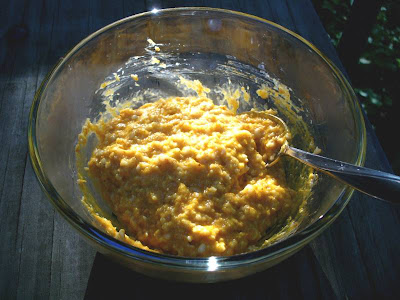Donna left a nice, informative
comment on an earlier post here titled
More Thoughts About Marching. This is my response, long enough for a post rather than just a comment.
We're the lucky ones, Donna, in my opinion. We found out about our myeloma by accident, long before we broke a bone, or suffered kidney damage, or whatever. We have the chance to pack a little more life into the next years than we might have done otherwise. Furthermore, we have the chance to learn about the treatment possibilities and about our own disease before having to make the serious life-changing decisions.
I'm in the position of making one of those decisions soon, because my particular oncologist is asking me to make it. Mayo and UAMC are right - studies have not shown any survival advantage in starting treatment early, so why suffer the symptoms of the treatments when there are none from the disease? Perhaps the answer is that early treatment may provide a higher quality of life even if it does not extend life; that is the proposition. At my last doctor visit I said to him that Mayo would wait until there are
C.R.A.B symptoms, such as broken bones, kidney impairment, or anemia. He responded "I want to keep you from having those symptoms."
That sounds great, and I love that attitude in my oncologist! But the problem is that the treatments all have side effects, some of them permanent. I discovered this when I was treated with thalidomide; I won't bore you with the list! So it's a balancing of risks: (1) Risk of permanent injury from the myeloma, versus (2) Risk of injury from the treatments. I've been resisting hard-core treatments now for almost half a year, opting for alternative treatments instead, with uncertain results.
Here's my engineer's understanding of myeloma: Plasma cells normally produce immunoglobulins (Ig) which fight infections. The plasma cells remain in the bone marrow, and the immunoglobulins escape into the blood stream where they do their work. Malignant cells normally still produce immunoglobulins, but they are ineffective and often lack one of the "arms" that normal immunoglobulins have. They are distinguished by the type of immunoglobulin (there are several types, including IgI, IgA, & IgM). They are further distinguished by the remaining arm (or is it the missing arm?), which may be either kappa or lambda. Hence your myeloma, and mine, is IgG Lambda. In some people, the malignant cells do not produce any immunoglobulins at all, or very few; that form of myeloma is called non-secretory (nothing is secreted). And I think this is a continuum; some people may secrete only a little and others a LOT.
Sorry for the long blah blah, but I wonder if you are a non-secretor, or nearly. If so, it's not necessarily a bad thing except that it makes the myeloma harder to track. I'm surprised to see that ALL of your Ig numbers are below the normal low limits; I don't know what to think of that, except to guess that the malignant cells are suppressing the production of the normal cells which do produce immunoglobulins.
IgG by immunofixation detects both normal IgG and abnormal (monoclonal) IgG equally, as I understand it. There is another test called serum protein electrophoresis (SPEP) which can show just the abnormal IgG. I wonder what your SPEP shows. Perhaps NONE, if that is the meaning of the April notation.
I do not have Bence-Jones proteins in the urine. More commonly now, I believe, these are called "free light chains." My doctor tests for these proteins in the urine, and in the blood as well, using a test called FreeLite (nephelometry). So far I have not had more than a trace of light chains in the urine, but they are detectable and above normal in the blood. Light chains are often used to track the myeloma in people who are non-secretors, so your oncologist may be doing those tests for that reason; I assume that you are asked to submit a 24-hour urine at every test interval. I would encourage you to ask your doctor for copies of every single lab test or radiologist's report; I do that and I've never been sorry.
There are other ways for us (anyone) to communicate more directly. One of the best is the
MMA List server, where myelomiacs or caregivers register as members and then receive emails sent to the list by other members. I've enjoyed this a lot lately. If you post a message to the list, people can respond through the list or directly to you. In any case, if you (or anyone) would like to email me directly, my address is minnesotadon at gmail dot com. Thanks, Donna, may your myeloma smolder forever!

Today's breakfast: Organic oatmeal, organic nonfat milk, blueberries, organic seedless grapes, banana. Estimated Weight Watcher points = 5.

Lunch today: Sunshine bread (Arrowhead Mills gluten-free baking mix, organic corn flour, organic amaranth, organic teff flour, nuts, other goodies), organic squash, onions, organic salsa, organic chunky peanut butter. Estimated Weight Watcher points = 7.












